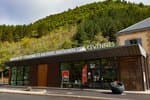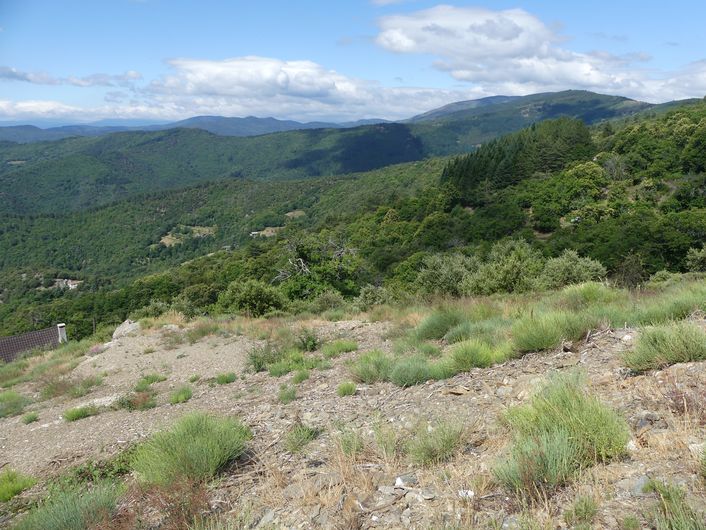
Tras Lou Serre
3 points of interest
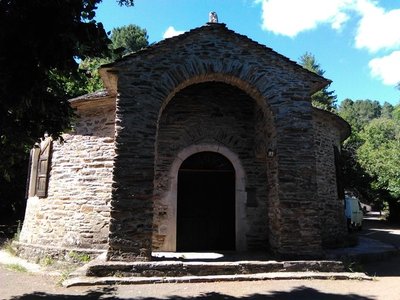
Le Temple - nathalie.thomas  Architecture
ArchitectureThe Temple (Protestant church)
The temple, built in the 19th century, is original for being circular. Like many other Cevenol municipalities, Ventalon-en-Cévennes has no centre: it is an ensemble of hamlets spread out in the mountains.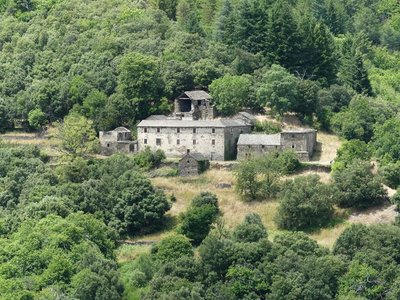
Le Viala - nathalie.thomas  Architecture
ArchitectureLe Viala
This ensemble of farmhouses (mas) with their characteristic Cevenol architecture and layout has been remarkably well renovated. It is part of Saint-Frézal-de-Ventalon. Two handsome properties set slightly apart precede the hamlet. The first mas has an imposing façade. The studded chestnut door overlooks a beautiful, rounded staircase made from schist flagstones. The houses are partly built onto the bedrock, which is the only way of compensating for the lack of foundations. It also preserved as much fertile soil as possible to be used for irrigated meadows, or terraced gardens equipped with reservoirs that are productive thanks to their good exposure. The roofs are made from tilestones of differing sizes that overlap like shiny scales.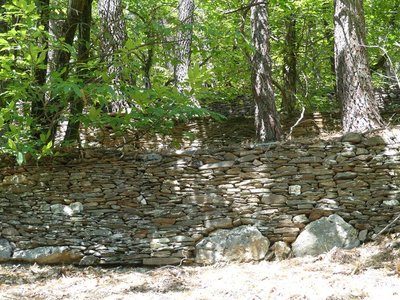
Bancels sous les Faysses - nathalie.thomas AgricultureThe chestnut orchard
The Destourbe orchard, at over 800 m in altitude, is an orchard of traditional chestnut varieties, most of which are dried in a purpose-built building, a clède. A herd of goats keeps down the undergrowth. Chestnut trees grew naturally in the Cévennes. Then, from the 12th century onwards, Benedictine monks planted, grafted and selected varieties to create chestnut orchards. The chestnut thus became the so-called “bread tree” of the Cevenol people. The most common variety is the Figarette, which is very small, crops early and is excellent clède-dried. The Pélégrine, which is quite big and delicious, is the best variety since it is not internally divided and is easy to peel. Research over the past 30 years has made it possible to rehabilitate chestnut orchards. Treatments for endothia (a fungus that propagates on the bark and ravages chestnut orchards), grafting and pruning as well as technical means to facilitate harvesting (nets, machines for crushing and peeling) now exist. The chestnut has been made more attractive by processing into puree, flour, jam, etc. To promote the Cevenol chestnut orchards, the association “Chemin de la Châtaigne” brings together farmers, artisans, guides and innkeepers.
Description
Start at “Lézinier” in Ventalon-en-Cévennes. Walk downhill to “Loubreyrou”, then climb to “Le Viala”. Make for “Col de Banette” via “Le Cros”. At “Col de Banette” return to “Lézinier” via “Clerguemort”.
This hike is taken from the guidebook Mont Lozère - Pays des sources, Sommet des Cévennes, published by the Pôle de pleine nature du Mont Lozère.
- Departure : In Lézinier, at the temple (Protestant church) of Saint-Andéol-de-Clerguemort
- Arrival : In Lézinier, at the temple (Protestant church) of Saint-Andéol-de-Clerguemort
- Towns crossed : Ventalon en Cévennes and Vialas
Forecast
Altimetric profile
Recommandations
Make sure your equipment is appropriate for the day’s weather conditions. Remember that the weather changes quickly in the mountains. Take enough water, wear sturdy shoes and put on a hat. Please close all gates and barriers behind you.
Information desks
Tourism'house and national Parc at Florac
Place de l'ancienne gare, N106, 48400 Florac-trois-rivières
This office is part of the National Park's associated tourist-information network, whose mission is to provide information on, and raise awareness of, the sites and events as well as the rules that must be observed in the National Park's central zone.
On site: exhibitions, video projections, events and shop Open year-round
Office de tourisme Des Cévennes au mont Lozère
le Quai, 48220 Le Pont de Montvert sud mont-Lozère
Access and parking
Parking :
Calculateur d'itinéraire Lio
Utilisez le calculateur liO pour organiser votre trajet en région Occitanie.
Autres régions
Calculez votre itinéraire en Auvergne Rhône Alpes sur Oùra
Biodiversité autour de l'itinéraire
Source


Report a problem or an error
If you have found an error on this page or if you have noticed any problems during your hike, please report them to us here:

